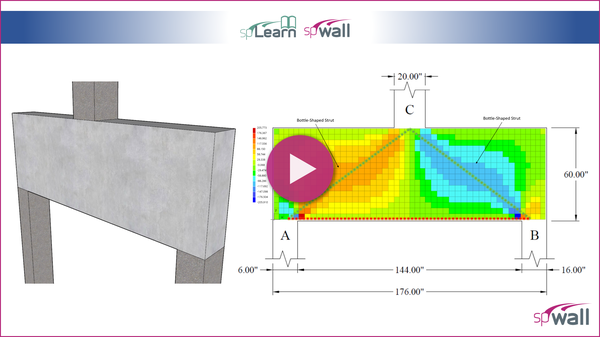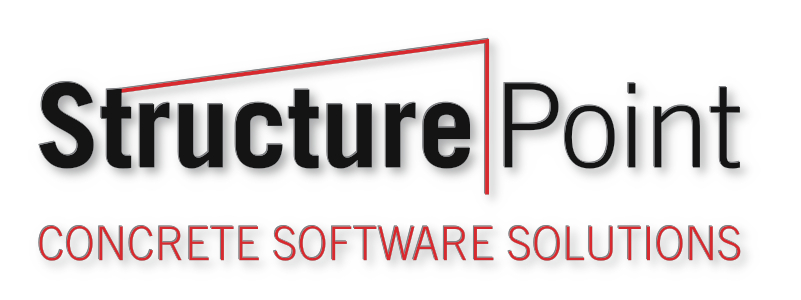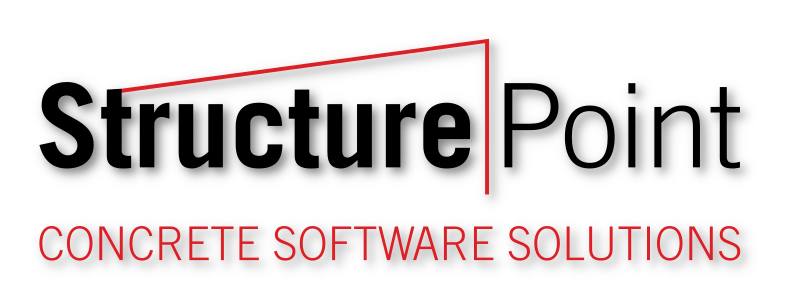Deep Beam Analysis & Design
06/14/2023

Overview
Deep beams behavior is not governed by flexure only and considerations of combined shear and flexure need to be addressed to properly analyze and design deep concrete structural members. The Finite Element Methods (FEM) and the Strut &Tie Method (STM) are two primary methods accepted in various standards for deep beam analysis.Deep beams behavior is not governed by flexure only and considerations of combined shear and flexure need to be addressed to properly analyze and design deep concrete structural members. The Finite Element Methods (FEM) and the Strut &Tie Method (STM) are the two primary methods defined in the ACI 318 standard for deep beam analysis.
Deep Beam – Transfer Girder Definition
Deep beams are presented in the ACI-319 standard in Section 9.9. They are defined as members that are loaded on one face and supported on the opposite face such that strut-like compression elements can develop between the loads and supports. Deep beam provisions are applicable when the clear span to overall member depth does not exceed 4 or when concentrated loads exist with a distance 2h from the face of the support.
Deep Beam Configurations
Deep beams commonly exist in reinforced concrete structures as framing members spanning between columns. In a typical building frame as shown below deep beam commonly serve as transfer girders to transfer heavy concentrated loads from one or more columns discontinued at certain elevation..

Similarly, in pile supported deep foundations (pile caps) deep mat slabs are supported on closely spaced piles to transfer heavy column loads to bed rock or stable soil layers. Heavy concentrated loads in the proximity of the support and cantilevered beam configurations can also create conditions requiring deep beam analysis, design and detailing.

Alternatively, a wall panel may have deep beam configurations spanning between reinforced concrete wall piers. This occurs frequently in applications in building shear and core walls, in tilt-up wall construction, and over very large openings as shown below.

Finally, deep beams may also be present as floor diaphragms and deep collectors. In such configurations, a combination of in plane and out of plane forces must be combined to complete the analysis.

Finally, deep beams may also be present as floor diaphragms and deep collectors. In such configurations, a combination of in plane and out of plane forces must be combined to complete the analysis.
Deep Beam Analysis Methods
PCA Method
The ACI 318 code does not contain detailed requirements for designing deep beams for moments except that a nonlinear strain distribution should be considered. Guidance for the design of deep girders for flexure has long been established by the Portland Cement Association (PCA). PCA Deep Grider Design (IS-097)
In this iconic publication presented special studies and numerical examples as design aids. With innovations in engineering research and the steady increase of computing power two other methods are used commonly to address deep beam analysis are introduced here.
Strut & Tie Method (STM)
The Strut & Tie Method was first introduced in the American Concrete Institute’s Building Code (ACI 318) as Appendix in 2005. It has gained acceptance in designing structural concrete members for conditions that are unique and difficult to address efficiently with conventional methods. This includes deep beams, girders, corbels, and members where a combination of axial, shear, flexure participate in influencing the member behavior.
The reader is referred to detailed, worked-out numerical examples, that illustrate the material presented in this PCA/StructurePoint article
PCA/StructurePoint Strut-and-Tie-Method Article
Finite Element Method (FEM)
The finite element Method has long been a reliable option to analyze structural members with complicated geometry and boundary conditions. Deep beams often have unusual loading and may contain openings or regular and irregular shapes where a suitable strut and tie model can become very complicated. spWall is a finite element program is used below to perform the analysis the complex conditions present in a deep beam. The FEM results from spWall can also guide the design professional to developing several hypothesized strut ad tie models and ultimately select the most reliable model for design if a hand solution is preferred.
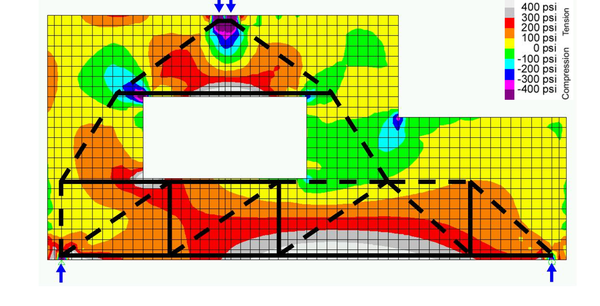
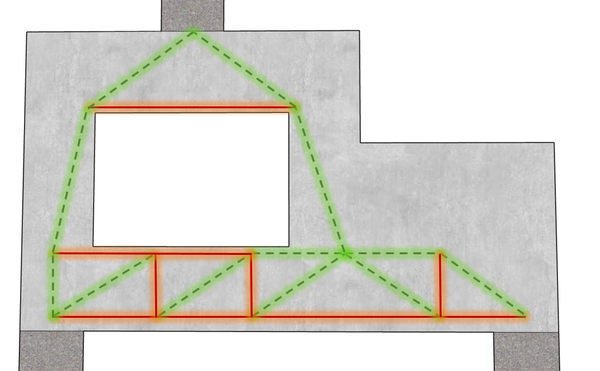
Click here to download spWall program or email StructurePoint with any questions or discussion on this topic. StructurePoint engineering software and services includes numerous useful technical documents to facilitate learning about analysis and design of reinforced concrete structures and all can be found on the RESOURCES page.
New Resources for Deep Beam Analysis and Design
Detailed comparison between STM and FEM can be found in Design of Deep Beam (Transfer Girder) Using Strut-and-Tie Model Design Example and How to Analyze and Design a Deep Beam Video Tutorial
